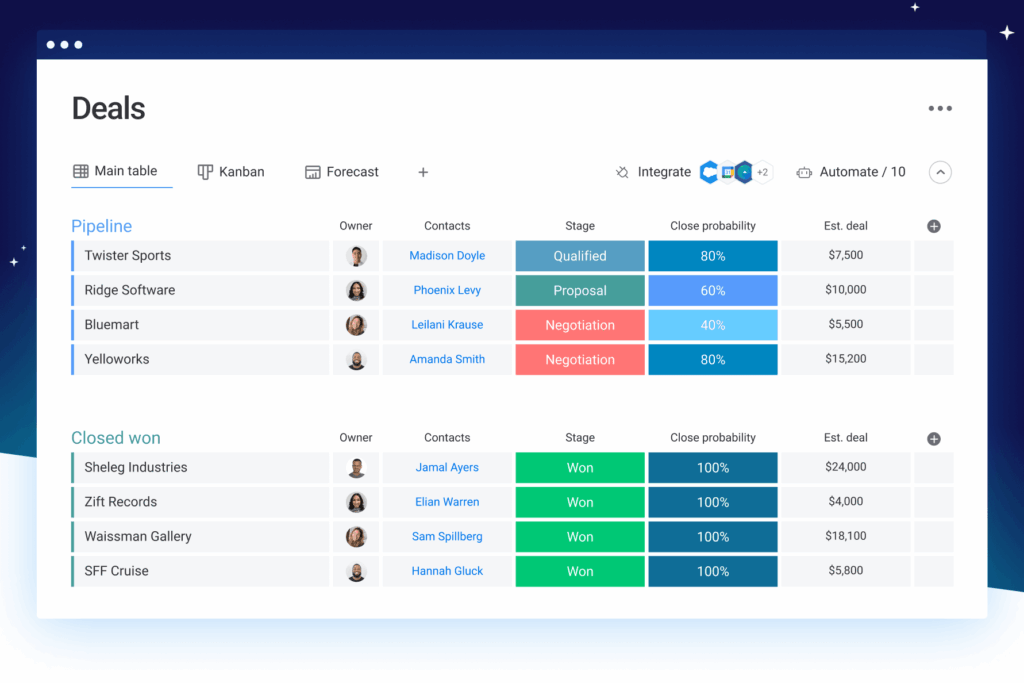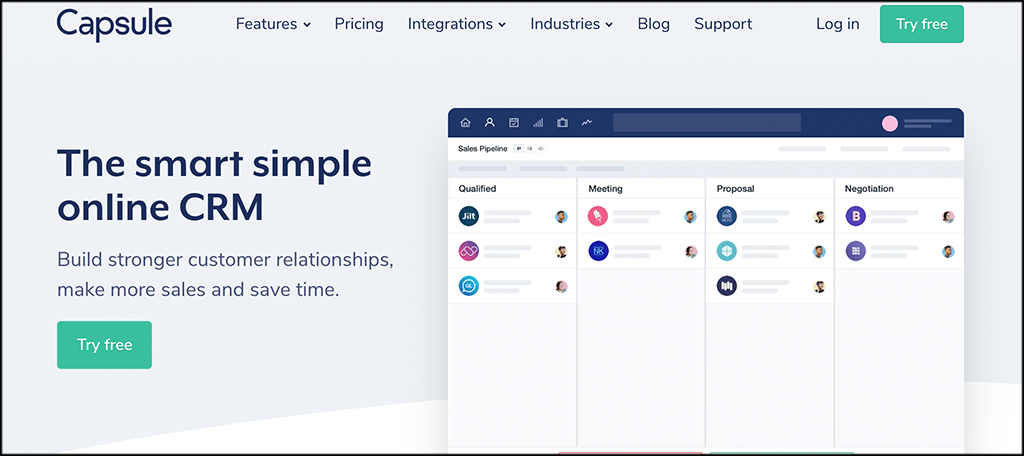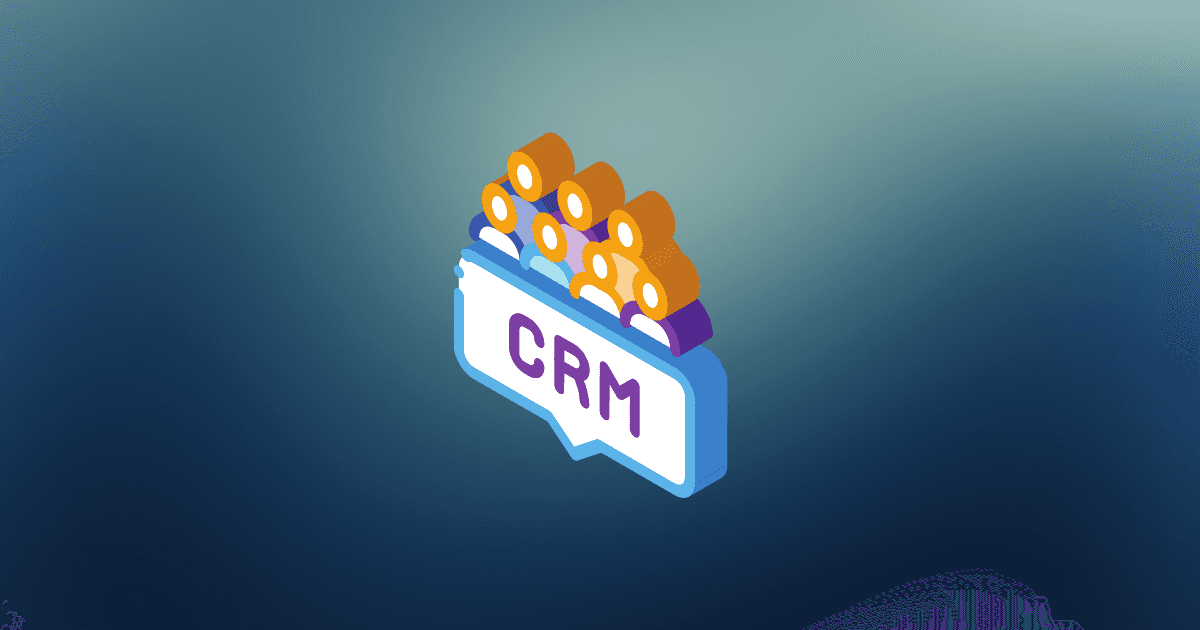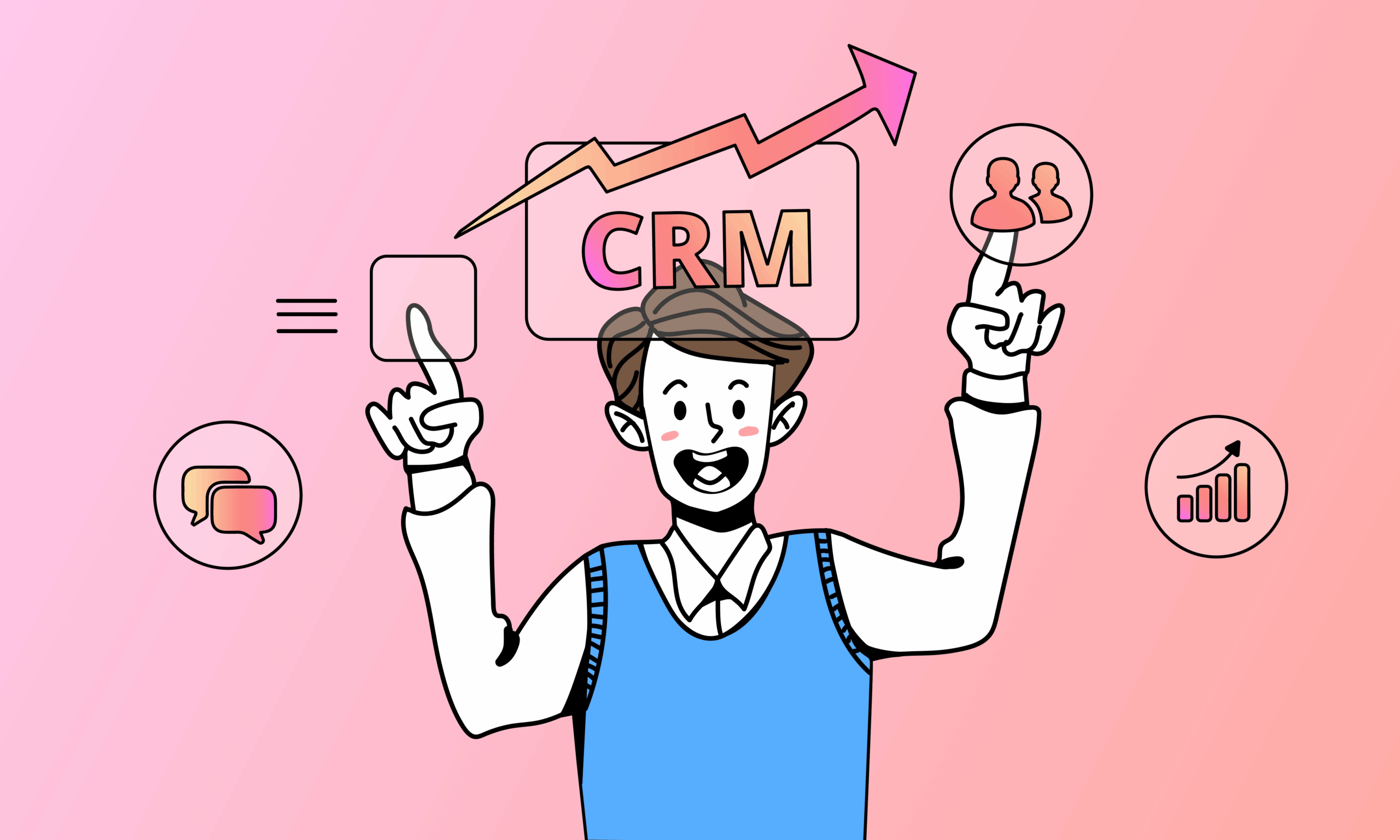
The Heart of the Artist: Why a CRM Matters
Being a small artist is a balancing act. You’re juggling the creative spark, the meticulous crafting of your art, and the often-overlooked, but crucial, business side. You’re not just creating; you’re selling, networking, managing clients, and promoting yourself. This is where a Customer Relationship Management (CRM) system comes into play – it’s the unsung hero for artists striving for sustainable success. It’s not about losing the artistic touch; it’s about freeing it up.
Think of a CRM as your digital studio assistant, your personal gallery manager, and your dedicated marketing guru all rolled into one. It’s a centralized hub where you can organize everything – from potential client interactions to tracking the sales of your latest masterpiece. Without a CRM, you’re likely relying on a chaotic mix of spreadsheets, sticky notes, and fragmented email threads. This approach leads to missed opportunities, lost leads, and a whole lot of unnecessary stress. A good CRM, on the other hand, empowers you to:
- Stay Organized: No more scrambling to find that client’s email address or remembering the details of a past conversation.
- Build Relationships: Nurture your connections with collectors, galleries, and fellow artists.
- Boost Sales: Track your leads, manage your sales pipeline, and close more deals.
- Save Time: Automate repetitive tasks, freeing up your time for what truly matters – creating art.
- Gain Insights: Understand your audience better and make data-driven decisions.
In essence, a CRM isn’t just a tool; it’s an investment in your artistic career. It’s about working smarter, not harder, and ensuring that your talent gets the recognition and rewards it deserves.
Key Features to Seek in a CRM for Artists
Not all CRMs are created equal. When choosing the best CRM for small artists, consider these essential features:
1. Contact Management
This is the foundation of any CRM. It allows you to store and organize all your contact information in one place. Look for features like:
- Detailed Profiles: Capture comprehensive information about each contact, including their interests, purchase history, and communication preferences.
- Segmentation: Group your contacts based on various criteria (e.g., collectors, galleries, potential buyers) to tailor your marketing efforts.
- Tagging: Use tags to categorize your contacts further, making it easier to find specific groups (e.g., “Interested in Landscapes,” “Attended Art Fair”).
2. Sales Pipeline Management
Track your sales process from lead generation to closing the deal. Key features include:
- Lead Tracking: Monitor potential sales and the progress of each lead.
- Deal Stages: Visualize your sales pipeline and identify bottlenecks.
- Task Management: Set reminders and assign tasks to ensure you follow up with leads promptly.
3. Email Marketing Integration
Easily send targeted email campaigns to your contacts. Look for features like:
- Email Templates: Create professional-looking email templates to save time.
- Segmentation: Target specific groups of contacts with tailored messaging.
- Analytics: Track your email open rates, click-through rates, and other key metrics to measure the effectiveness of your campaigns.
4. Project Management
Manage your art projects, commissions, and exhibitions with ease. Key features include:
- Project Tracking: Monitor the progress of each project and its associated tasks.
- Deadline Reminders: Set deadlines and receive reminders to stay on schedule.
- Document Storage: Store important documents related to your projects, such as contracts and invoices.
5. Reporting and Analytics
Gain insights into your business performance. Look for features like:
- Sales Reports: Track your sales over time and identify your top-selling pieces.
- Marketing Reports: Measure the effectiveness of your marketing campaigns.
- Contact Activity Reports: See how your contacts are interacting with your business.
6. Integrations
Seamlessly connect your CRM with other tools you use, such as:
- Email Providers: Integrate with Gmail, Outlook, or other email providers.
- Social Media Platforms: Connect with Facebook, Instagram, and other social media platforms.
- E-commerce Platforms: Integrate with platforms like Shopify or Etsy to manage your online sales.
Top CRM Systems for Small Artists: A Deep Dive
Choosing the right CRM can feel overwhelming, so let’s explore some of the best options tailored for the unique needs of small artists.
1. HubSpot CRM
Why it’s great for artists: HubSpot is a powerhouse, and the best part is its free version. It’s a robust CRM with a user-friendly interface, perfect for artists who are just starting out or looking for a comprehensive, yet budget-friendly, solution. It offers a wide range of features, including contact management, sales pipeline tracking, email marketing, and reporting. The free version has limitations, but it’s more than enough to get you started. As your needs grow, you can upgrade to a paid plan for more advanced features.
Key features for artists:
- Free Forever Plan: A generous free plan makes it accessible for artists on a tight budget.
- Contact Management: Organize and segment your contacts effectively.
- Sales Pipeline: Track leads and manage your sales process.
- Email Marketing: Create and send email campaigns.
- Integration: Integrates well with other popular marketing and sales tools.
Potential drawbacks: The free version has limited features and storage. The paid plans can become expensive as you scale.
2. Zoho CRM
Why it’s great for artists: Zoho CRM is another excellent option, known for its affordability and versatility. It offers a wide range of features, including contact management, sales automation, and marketing tools. It’s particularly well-suited for artists who need a CRM that can grow with their business. Zoho offers a free plan for up to three users, making it a viable option for individual artists and small teams.
Key features for artists:
- Affordable Pricing: Competitive pricing plans make it budget-friendly.
- Customization: Highly customizable to fit your specific needs.
- Sales Automation: Automate repetitive tasks, such as sending follow-up emails.
- Reporting & Analytics: Gain insights into your sales and marketing performance.
- Integrations: Integrates with many third-party apps.
Potential drawbacks: The interface can be slightly less intuitive than some other options. The free plan has limited features and storage.
3. Freshsales
Why it’s great for artists: Freshsales is designed with sales in mind. It’s a great choice for artists who are focused on building a strong sales pipeline and closing deals. It offers features like lead scoring, sales automation, and phone integration. It’s known for its user-friendly interface and excellent customer support.
Key features for artists:
- User-Friendly Interface: Easy to learn and use.
- Lead Scoring: Prioritize your leads based on their behavior and engagement.
- Sales Automation: Automate tasks and streamline your sales process.
- Phone Integration: Make and receive calls directly from the CRM.
- Reporting and Analytics: Track your sales performance.
Potential drawbacks: The free plan has limited features. The focus is heavily on sales, so some features might be less relevant for artists who prioritize relationship building.
4. Pipedrive
Why it’s great for artists: Pipedrive is a sales-focused CRM that excels at visual pipeline management. Its user-friendly interface and clear visual representation of the sales process make it easy to track deals and stay organized. It’s an excellent choice for artists who want a straightforward, intuitive CRM to manage their sales pipeline.
Key features for artists:
- Visual Pipeline: Clear visual representation of your sales pipeline.
- Deal Tracking: Track deals and manage your sales process effectively.
- Activity Tracking: Schedule and track your activities.
- Automation: Automate repetitive tasks.
- Integrations: Integrates with many popular apps.
Potential drawbacks: Limited features compared to some other CRMs. The pricing is based on the number of users, so it can become expensive as your team grows.
5. Capsule CRM
Why it’s great for artists: Capsule CRM is a simple, yet effective, CRM that’s easy to learn and use. It’s a great choice for artists who want a straightforward CRM without all the bells and whistles. It focuses on contact management and relationship building. It is particularly well-suited for artists who value simplicity and ease of use.
Key features for artists:
- Simplicity: Easy to learn and use.
- Contact Management: Excellent contact management features.
- Task Management: Manage your tasks and stay organized.
- Sales Pipeline: Track your sales pipeline.
- Affordable: Competitive pricing.
Potential drawbacks: Fewer features compared to some other CRMs. It might not be suitable for artists who need advanced sales automation or marketing features.
6. HoneyBook
Why it’s great for artists: HoneyBook is a business management platform specifically designed for creative entrepreneurs, making it a strong contender for artists. While it goes beyond a simple CRM, its capabilities in project management, invoicing, contracts, and client communication are invaluable. It is built with creative professionals in mind and offers a seamless experience.
Key features for artists:
- Project Management: Manage projects, track deadlines, and stay organized.
- Invoicing: Create and send professional invoices.
- Contracts: Create and manage contracts.
- Client Communication: Communicate with clients through a centralized platform.
- Payment Processing: Accept payments online.
Potential drawbacks: It is more expensive than some other CRM options. It may have features that are not entirely relevant to all artists.
Implementing Your CRM: A Step-by-Step Guide
Once you’ve chosen your CRM, the next step is implementation. Here’s a simple guide to help you get started:
1. Planning and Preparation
Before diving into the CRM, take some time to plan your strategy. Ask yourself these questions:
- What are your goals? What do you want to achieve with your CRM? (e.g., increase sales, improve client communication, save time)
- Who is your target audience? Understand your collectors, galleries, and other contacts.
- What data do you need to track? Identify the key information you need to capture about your contacts and sales.
- What are your existing processes? How do you currently manage your contacts, sales, and marketing?
2. Data Migration
If you’re switching from another system (like spreadsheets), you’ll need to import your existing data. This can be a time-consuming process, but it’s essential for a smooth transition. Most CRMs allow you to import data from CSV files. Make sure your data is clean and organized before importing it.
3. Customization
Tailor your CRM to fit your specific needs. This might involve:
- Adding custom fields: Add fields to capture information specific to your art business (e.g., medium, size, price).
- Creating custom pipelines: Customize your sales pipeline to match your sales process.
- Setting up automation: Automate repetitive tasks, such as sending follow-up emails.
4. Training
Learn how to use your CRM. Take advantage of tutorials, webinars, and customer support resources. If you’re working with a team, make sure everyone is trained on how to use the CRM.
5. Testing
Before launching your CRM, test it thoroughly. Make sure all the features are working as expected and that your data is accurate. Do a trial run of your sales pipeline and email campaigns.
6. Launch and Monitoring
Once you’re confident that your CRM is set up correctly, launch it. Start using it to manage your contacts, sales, and marketing. Monitor your progress and make adjustments as needed. Regularly review your data and reports to gain insights into your business performance.
Beyond the CRM: Complementary Tools
While a CRM is the core of your business operations, consider these complementary tools to further streamline your workflow:
- Email Marketing Software: For more advanced email marketing capabilities (e.g., Mailchimp, ConvertKit).
- Project Management Software: For managing complex projects and collaborations (e.g., Asana, Trello).
- E-commerce Platform: For selling your art online (e.g., Shopify, Etsy).
- Social Media Management Tools: For scheduling and managing your social media posts (e.g., Hootsuite, Buffer).
- Accounting Software: For managing your finances and taxes (e.g., QuickBooks, Xero).
Building a Thriving Artistic Career: The CRM Advantage
In the dynamic world of art, success hinges on more than just talent; it requires a strategic approach to business. A CRM is not merely a piece of software; it’s a strategic partner in your journey, empowering you to:
- Cultivate Deeper Connections: Build meaningful relationships with collectors, galleries, and fellow artists.
- Streamline Your Sales Process: From initial contact to closing the deal, manage your sales pipeline with ease.
- Elevate Your Marketing Efforts: Target your audience with precision and measure the impact of your campaigns.
- Optimize Your Time: Automate tasks, freeing up your time to focus on your creative vision.
- Make Data-Driven Decisions: Leverage insights to understand your audience, refine your strategies, and drive growth.
Choosing the best CRM for small artists is the first step. By implementing a CRM and using it effectively, you can unlock your full potential as an artist and build a thriving, sustainable career. Embrace the power of organization, build meaningful relationships, and let your art speak for itself, knowing you have a robust system supporting your every step.
Embrace the future of art business. Choose your CRM today and start building your artistic empire!


